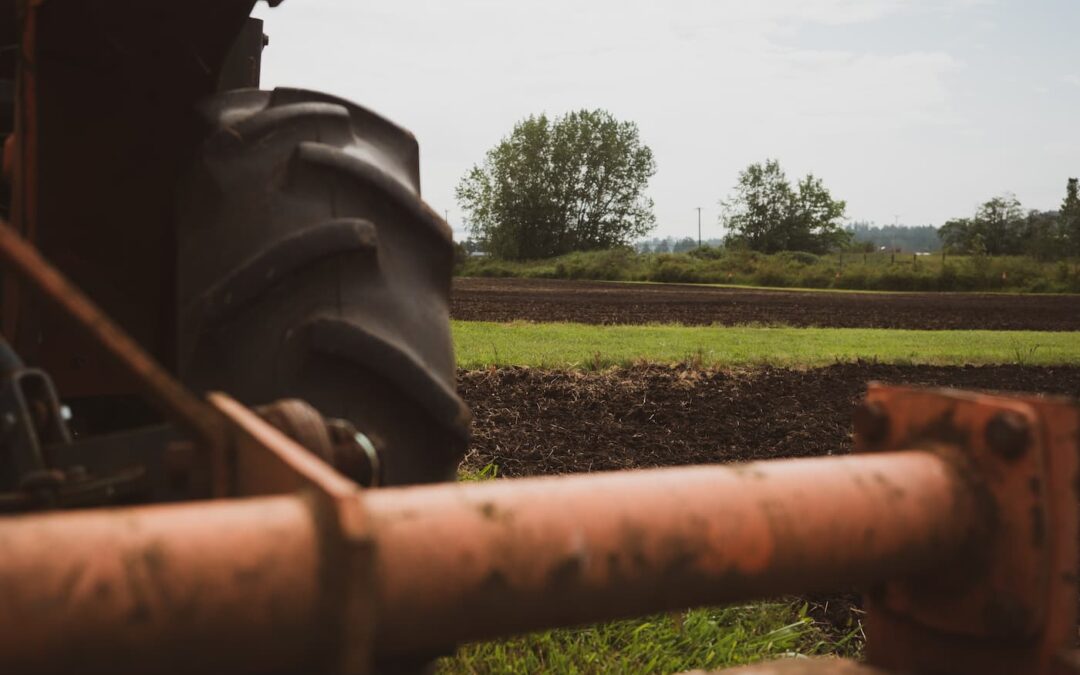Agriculture, the backbone of human sustenance, faces a profound challenge in the form of climate change. As the global climate shifts due to human activities, the agricultural industry finds itself at the frontline of these changes. In this blog post, we delve into the intricate relationship between climate change and agriculture, exploring the various ways in which shifting weather patterns, rising temperatures, and other climate-related factors impact this vital industry.
Changing Weather Patterns
One of the most visible impacts of climate change on agriculture is the alteration of weather patterns. Erratic and unpredictable weather events, such as intense rainfall or prolonged droughts, disrupt traditional growing cycles. Farmers must grapple with the challenge of planting and harvesting their crops amidst an increasingly unstable climate. Floods destroy crops and soil structures, while droughts hinder germination and crop growth. These shifts threaten not only crop yields but also food security, as they introduce uncertainty into the lives of both farmers and consumers.
Rising Temperatures
Rising global temperatures are another critical facet of climate change that affects agriculture. As heatwaves become more frequent and intense, crops face heat stress, leading to reduced photosynthesis, diminished yields, and lower nutritional value. Crops like wheat and corn, crucial for global food supplies, are particularly sensitive to temperature changes. Livestock also suffer under extreme heat, with decreased feed intake and productivity, exacerbating the challenges faced by agricultural communities.
Altered Growing Seasons
Climate change disrupts the established rhythms of planting and harvesting, undermining the predictability that farmers depend on. Warmer winters can lead to earlier spring growth, but this exposes plants to the risk of late frosts. Conversely, longer frost-free periods might alter the life cycles of pests and diseases, affecting the timing of pest management strategies. Adaptation becomes a necessity as farmers seek to adjust to these altered growing seasons, requiring new techniques and practices.
Increased Pest and Disease Pressure
Warmer temperatures create a favorable environment for the proliferation of pests and diseases, jeopardizing both crop quality and yield. Insect pests, once confined to specific regions, now extend their reach to higher altitudes and latitudes due to milder winters. The arrival of new pests, along with the increased prevalence of existing ones, forces farmers to find innovative methods to protect their crops. Integrated pest management approaches, biological controls, and resilient crop varieties become essential tools in the battle against these changing pest dynamics.
Water Scarcity and Drought
Water scarcity and drought, exacerbated by climate change, cast a shadow of uncertainty over agricultural production. Reduced snowpack and changing rainfall patterns lead to water shortages, impacting irrigation and livestock operations. Drought-induced stress on crops weakens their resilience to diseases and pests, creating a cycle of vulnerability. The adoption of efficient irrigation methods, water-saving technologies, and drought-resistant crop varieties becomes vital for maintaining agricultural productivity.
Soil Degradation
Extreme weather events like heavy rainfall and flooding contribute to soil erosion and degradation. These events strip away topsoil and vital nutrients, compromising soil fertility and plant health. Soil conservation practices such as cover cropping, contour plowing, and agroforestry play a pivotal role in mitigating soil erosion. Preserving soil quality is crucial for sustaining agricultural productivity and preventing long-term ecological damage.
Impact on Livestock and Animal Agriculture
Livestock and animal agriculture face their own set of challenges due to climate change. Heat stress reduces livestock growth rates and milk production, affecting both economic viability and animal welfare. Changing temperatures can also alter the distribution of livestock diseases, affecting animal health management strategies. To adapt, farmers may need to adjust their breeding programs, improve ventilation systems, and enhance animal health monitoring.
Food Security and Global Supply Chains
Climate change introduces uncertainties into global food supply chains, affecting the availability and affordability of essential foods. Extreme weather events can disrupt transportation routes and cause supply chain disruptions. Vulnerable communities, already grappling with food insecurity, are disproportionately affected by these disruptions. Climate-resilient crops, diversified farming systems, and regional food security initiatives play a crucial role in ensuring a stable and accessible food supply.
Adaptation and Resilience Strategies
The agricultural sector is embracing innovative practices to build resilience against climate change. Crop diversification reduces risks by distributing exposure to various weather conditions. Plant breeding programs focus on developing climate-resilient varieties that can thrive under new conditions. Precision agriculture leverages technology to optimize resource use and enhance yields sustainably.
Role of Technology in Mitigation
Technological advancements provide a glimmer of hope in mitigating climate impacts on agriculture. Satellite imagery, weather forecasts, and data analytics help farmers make informed decisions. Climate-smart agricultural practices integrate technology to monitor soil moisture, optimize irrigation, and manage pests effectively.
Policy and International Cooperation
Addressing the impact of climate change on agriculture requires collective global efforts. International agreements and policies play a crucial role in shaping agricultural practices. Governments, NGOs, and research institutions collaborate to develop strategies that promote sustainable farming systems and mitigate climate impacts.
Supporting Farmers and Agricultural Communities
Supporting farmers in adapting to climate change is paramount. Access to education, resources, and financial assistance enables farmers to implement sustainable practices. Training programs and knowledge-sharing platforms empower agricultural communities to navigate the challenges posed by a changing climate.
The impact of climate change on agriculture underscores the urgent need for concerted action. As the agricultural sector grapples with shifting weather patterns, rising temperatures, and other challenges, adaptation becomes a shared responsibility. Collaboration among governments, industries, and communities is essential to develop and implement sustainable solutions. Through innovative practices, technology, and policy interventions, we can cultivate resilience and ensure that agriculture continues to provide for the world’s growing population while safeguarding the planet for future generations.

